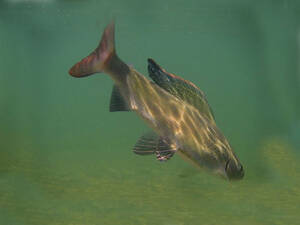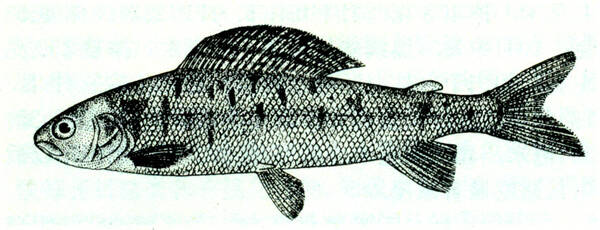
Name Thymallus arcticus grubei
Alias Thymallus arcticus grubei,Amur grayling, spotted trout, redfish, sea urchins, etc.
Family Salmoniformes Gnaphalidae
Life No verification information
The Latin name of Heilongjiang grayling is Thymallus arcticus grubei, and its foreign name is Amur grayling. In the Heilongjiang and Yalu River systems, Heilongjiang grayling is the main target of local fishing.

Heilongjiang grayling is a cold-water fish, but unlike other cold-water fish, they live in mountain streams even in the cold winter, unlike some cold-water fish such as taimen, mullet, pike or mountain catfish that swim to large rivers to hibernate. Heilongjiang grayling has a relatively small swimming range and does not enter rivers and lakes all year round, but only lives in mountain streams. In summer, they live in the upper reaches of tributaries with relatively low water temperatures. They like to live in rivers with lush aquatic plants, numerous insects, clear water, and fast currents. Even in the cold winter, they still stay in the mountain streams and return to the lower reaches to find a deeper stream to hibernate. Therefore, except for those who live in the mountains, few people outside have seen their true appearance. Many people do not know graylings, and have not even heard of their names, which makes them very mysterious.

Heilongjiang graylings prey on prey at all four seasons of the year, except during the spawning season when their feeding habits are slightly worse. Graylings prey on aquatic insects and mollusks such as snails, and also on some small fish. In summer, they like to prey on aquatic insects in shallow water, or on terrestrial insects and moths that fall into the water. In the evening of summer, through the clear stream, you can often see several graylings staying in the middle and lower layers of the turbulent stream, turning their eyes and staring closely at the dancing moths above the water. Once a moth splashes onto the water surface, before it is washed away by the turbulent water, several graylings will rush up at the same time, and one of the graylings will grab it and immediately drag it underwater. Even in the cold winter, when a thick layer of ice forms on the stream, graylings will continue to eat under the ice to supplement their nutrition and survive the long and cold winter. Graylings eat all year round and are very ferocious, making them an excellent target for stream fishing.
Heilongjiang graylings migrate twice a year: once in spring, they migrate upstream for reproduction and foraging; and once before the 15th day of the eighth lunar month, they migrate to the lower reaches of the stream to avoid the freezing of winter. Graylings reach sexual maturity at the age of 4 winters, and the breeding season is from mid-April to early May each year. At this time, sexually mature parent fish swim in groups in clear and turbulent waters, where they chase each other and lay eggs that adhere to the gravel at the bottom of the river. After the 15th day of the eighth lunar month each year, graylings will gather together and swim downstream, and begin to gather in the deeper lower reaches of the stream, preparing to spend the long winter there.
Almost all cold-water fish are carnivorous, and Heilongjiang fennel is no exception. Cold-water fish grow slowly and live in unpolluted streams. Their meat is particularly tender, delicious, and has no earthy smell. It has high nutritional value and edible value. The meat of fennel is a high-protein, high-fat fish with almost zero cholesterol. Moreover, its meat is rich in amino acids, unsaturated fatty acids, minerals and vitamins. The content of these trace elements is several times that of other fish, which is extremely beneficial to human health. Local fishermen mostly fish during the migration period, and the fishing intensity is too high, which has significantly reduced the amount of resources that were originally not much. In addition, since the rivers are all building reservoirs and water conservancy facilities, the spawning, feeding and wintering environment of fennel has changed, which has also affected its reproduction and survival.
Listed in the second level of the "List of National Key Protected Wildlife in China". (Wild populations only)
Protect wild animals and eliminate game.
Maintaining ecological balance is everyone's responsibility!